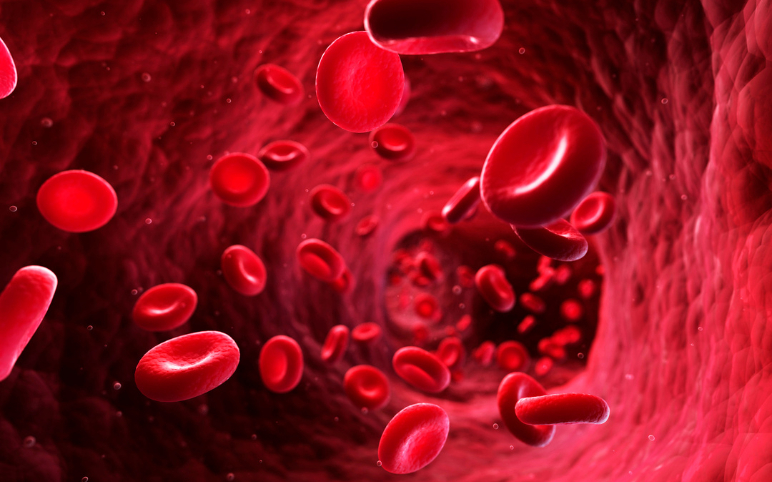Gene Therapy in Rare Disorders: Acceptance in Europe Faces Challenges
May 12, 2023
By bringing life-changing benefits to people with rare diseases and cancers, cell and gene therapies are reshaping the field of medicine. These treatments have recently gained tremendous publicity for meeting long-standing unmet needs and being extremely costly. But high production costs are limiting patient access to cell and gene therapies.
Larger patient groups than with earlier therapies make this a highly dynamic moment for healthcare systems, including payers and regulators. But the question is, will novel treatments act as a “forcing function” to make payers adjust? Or can healthcare evolve to keep up with scientific advancements?
Complicated route for access and roadblocks in reimbursement
A possible catastrophe involving advanced treatment medicinal products (ATMPs) is developing in Europe. Reimbursement is a challenging topic in Europe because it requires negotiating a cost with different EU nations. Even though some nations can accept the amount demanded, others cannot. This is why Europe, which once led the way, is now “a flashing yellow light of caution” for patient access. The roadblocks in reimbursement have complicated patient access in Europe, leading to the commercial failure of many European gene therapies and companies withdrawing their product after the approval.
In EU4 countries (Germany, France, Italy, and Spain) and the UK, advanced therapy medicinal products (ATMPs) are classified as medicines, and the traditional appraisal process for pricing and reimbursement is applied in the same way as for other medicinal products. However, Germany has a unique approach where they classify ATMPs as either medicine (AMNOG process) or medical procedures (PEI process), depending on the product’s specific characteristics. Although no specific track is designated for cell and gene therapies (CGTs) in the EU4 and UK countries, various systems have been implemented to improve access to these innovative therapies. In the UK, the Highly Specialized Technologies Program (HSTP) evaluates CGTs for ultra-rare diseases based on a weighted ICER (incremental cost-effectiveness ratio) threshold of a maximum of GBP 300,000. The HSTP assesses cost-effectiveness by projecting over a longer period and considering the technological innovativeness of the therapy beyond its health benefits. Several products like STRIMVELIS, LUXTURNA, and ZOLGENSMA have undergone evaluation under the HSTP program.
The company’s choice also represents how rare disease treatments authorized in Europe are paid for, with choices about compensation being made by the governments of individual European member states. European nations can better bargain for greater reductions because many have single-payer healthcare systems, making them bolder in their lower-priced demands than the United States.
Knocking the pre-recognized price benchmarks, price negotiations, and unfortunate retraction
Gene therapy was once estimated to cost roughly USD 1–2 million, which thought to be an astronomical amount for a therapy. However, recent price negotiations have exceeded the pre-recognized price benchmarks. The cost of gene therapies, which is already approaching USD 3–4 million, is straining healthcare systems all around the world. HEMGENIX, which costs around USD 3.5 million has been authorized in the US and is one of the most costly gene therapy available worldwide. Not just in the US, but also in Europe, high list prices of gene therapy are becoming common. For example, the gene therapy UPSTAZA from PTC Therapeutics has recently received the backing of the National Institute for Health and Care Excellence (NICE), with a list price of USD 3.7 million. The gene therapy LIBMELDY, developed by Orchard Therapeutic, received NICE’s backing as well. The list price of this drug is around USD 3.9 million. All the abovementioned examples show that the pricing gap between the US and Europe is narrowing.

One of the crucial steps in the commercialization of gene therapy is price negotiation. If the path is carefully navigated, the gene therapy market segment may offer high-value returns. However, the lack of patient share in a rare target market, even after negotiating the desired pricing, is a significant barrier. This causes gene therapies to be commercially unsuccessful. Bluebird Bio (SKYSONA and ZYNTEGLO) and uniQure (GLYBERA) had to retract their EU marketing authorization application due to issues with pricing negotiations and commercial failure.
GLYBERA was the first gene therapy to receive marketing authorization (MA) in the EU in 2012. It was withdrawn from the market due to its commercial failure in the EU. GLYBERA had a market price of approximately EUR 1 million and a very limited target population. This added to its failure in the market as the governments were not interested in paying for it. Unfortunately, GLYBERA was not the only gene therapy the company had to withdraw from the European market.
In August 2021, Bluebird Bio announced its plans to close operations in Europe, citing difficulty in striking agreements with European governments on reimbursement for its gene therapies, SKYSONA (adrenoleukodystrophy) and ZYNTEGLO (beta‐thalassemia). The European Commission approved SKYSONA in July 2021, and ZYNTEGLO received conditional European Union marketing approval in May 2019; manufacturing issues hampered its rollout until the beginning of 2021.
Concerns over payment in the EU peaked following Bluebird Bio’s declaration that it would withdraw its gene therapy from the EU after failing to secure the recompense it sought in the important European market. Novartis shields itself through upfront access and a glimpse of reimbursed therapies.
Despite the eye-popping price tag, many companies have successfully secured reimbursement in Europe for their gene therapies. Additionally, companies in the EU and other nations are offering innovative- payment methods to support improved access to gene therapies, and premium pricing. Below mentioned table gives a brief idea about the list of gene therapies reimbursed in EU4 countries and the UK:
For instance, in Europe, ZOLGENSMA received conditional approval in May 2020. However, the EU approval for ZOLGENSMA differs from its approvals in the US and Japan, where it is approved for treating all types of SMA. In Europe, ZOLGENSMA is only approved for treating spinal muscular atrophy (SMA) type 1, the most severe disease, and usually affects infants. ZOLGENSMA was launched in Germany at an exceptionally high cost of EUR 1.945 million. Agreements were made for reimbursement based on outcomes to ensure patients can access it promptly. Novartis shared data with health technology evaluation organizations to demonstrate the benefits of ZOLGENSMA for treating SMA, which helped persuade them of its value. In some markets, there can be a delay between approval and reimbursement of new drugs, but in Europe, Novartis created a program called “Day One” to address this issue. Through the program, Novartis guaranteed up-front access to ZOLGENSMA for patients, even before the drug was officially reimbursed. This program was designed to ensure that patients with SMA, who urgently need treatment, could access ZOLGENSMA as soon as possible without waiting for the reimbursement process to be completed.
To overcome the reimbursement issues, many companies offer innovative payment systems like Spark Therapeutics announced three new payer programs: an outcomes-based rebate arrangement with a long-term durability measure, an innovative contracting model, and a proposal to the Centers for Medicare & Medicaid Service under which payments for LUXTURNA would be made over time in installments. The value-based payment system in which manufacturers are paid if a treatment proves successful. Multiyear payments could be used if long-term effects are uncertain, with payments terminated if a drug fails to show its intended effects.
Uptake remains thwarted. Many hurdles to overcome.
The fragmented legislative and market access environment proves that the market for cell and gene therapies is still in its infancy. While regulatory clearance is typically uniform across the US and EU, this is not the case for cell and gene therapies. The regulatory climate, HTA, acceptable prices, and market entry route are heterogeneous, indicating that this is not a conventional market for producers. The market entry continues to be difficult, especially in Europe, where seven gene therapies have been discontinued for therapeutic or commercial reasons. There is an enormous disparity in availability across Europe, with the UK and Germany dominating with the largest number of reimbursed therapies and Spain trailing, though this has improved over the past year. Recently launched cell and gene therapies still have visibly high ex-factory costs, but contracting (in the US) and private discounts/managed access deals (in Europe) frequently lower net prices. With total reductions for reimbursed cell and gene therapies varying from 10% to 40%, European gross-to-net disparities are becoming more significant. Future gross-to-net disparities could increase, particularly in more competitive groups (like CAR-Ts) and as a result of gradually incorporating early lines of therapy for more indications. As more cell and gene therapies and TMPs are introduced, new methods to cell and gene therapies for rare disorders market access will develop. These treatments offer significant health advantages but have a sizable potential effect on pharmaceutical budgets.

Downloads
Article in PDF



